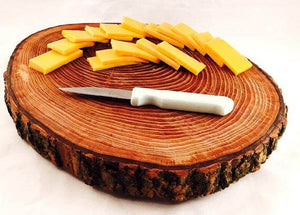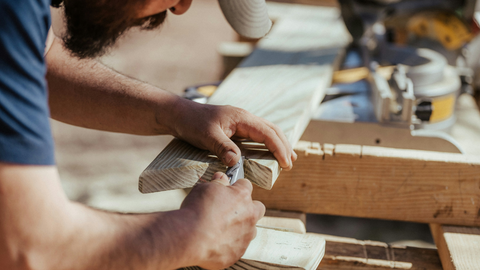THE ART OF WOODWORKING: A Guide to Skills Development and Practical Tips
Ever wondered how a blend of precision and creativity in woodworking could shape essential skills? Join us as we explore the magical world of woodworking and its pivotal role in the realm of STEAM education. Can crafting with wood be the missing piece in your skill development puzzle?
Crafting isn't just about making things; it's about the perfect blend of skill and imagination. Woodworking, in particular, is a magical symphony of precision and creativity. Every tool, from chisels to drills, plays a crucial role in bringing an artisan's vision to life within the walls of a workshop.
As our world embraces Science, Technology, Engineering, Art, and Mathematics (STEAM) education, it's crucial to recognize the value of hands-on learning. Amidst the focus on coding and programming skills, woodworking stands out as an essential component of STEAM education. In this blog post, let's explore why woodworking is a key player in STEAM education and how it shapes the development of vital practical skills.
WHAT IS WOODWORKING?
Woodworking is a highly skilled and ancient craft that revolves around the art of shaping and manipulating wood to craft an array of structures, furniture, decorative pieces, and more. This intricate practice involves employing various techniques, including carving, joinery, turning, and finishing, to bring the beauty of wood to life. Throughout history, woodworking has stood as a fundamental human activity, witnessing an evolution from rudimentary tools and techniques to the sophisticated methods employed in contemporary times. It's a timeless craft that continues to blend traditional wisdom with modern innovation.
Here are some key facts and insights about woodworking:
Historical Importance: Woodworking holds a significant place in history, stretching back to ancient civilizations where people relied on wood to craft tools, homes, and essential items. Throughout cultures, woodworking has shaped architecture, furniture styles, and cultural artifacts, reflecting the ingenuity of humanity.
Artistic Expression: Woodworking isn't just about functionality; it's a form of artistic expression. Skilled woodworkers use their imagination and skill to transform raw wood into stunning pieces of art. Whether through intricate carvings or elegant furniture designs, woodworking allows artisans to express their creativity and passion.
Cognitive Benefits: Research indicates that woodworking offers numerous cognitive advantages. Engaging in hands-on woodworking activities stimulates critical thinking, problem-solving abilities, and spatial awareness. Planning, measuring, and paying attention to detail all contribute to enhancing cognitive function and mental flexibility.
Stress Relief: Many consider woodworking a therapeutic endeavor that aids in stress reduction and promotes relaxation. Focusing on the rhythmic movements of carving or the precision of joinery can induce a sense of tranquility and mindfulness. For many woodworkers, the process of creating with their hands brings solace and fulfillment.
Skill Enhancement: Woodworking provides an excellent platform for developing practical skills applicable in various aspects of life. Learning to use woodworking tools safely and effectively requires patience, practice, and determination. From understanding wood properties to mastering different techniques, woodworking nurtures skills like hand-eye coordination, dexterity, and attention to detail.
Integration with STEAM Education: Woodworking seamlessly integrates into STEAM (Science, Technology, Engineering, Art, and Mathematics) education frameworks. It offers hands-on learning opportunities that connect theoretical concepts with real-world applications. Through woodworking projects, students explore scientific principles, engineering design, mathematical concepts, and artistic expression in a tangible and engaging manner.
Sustainable Practices: In the face of environmental concerns, woodworking promotes responsible use of natural resources. Many woodworkers prioritize ethically sourced and sustainable wood materials, contributing to conservation efforts and advocating for eco-friendly practices in craftsmanship.
In essence, woodworking represents not only a craft but a journey of exploration, creativity, and skill development. From its historical roots to its modern applications, woodworking continues to inspire and enrich lives while fostering a deep appreciation for the beauty and versatility of wood.
Beyond being a mere hobby, woodworking is a practical skill that nurtures creativity, problem-solving, and attention to detail. When individuals engage in woodworking projects, they gain hands-on experience that translates into valuable life skills. Now, let's delve into how this craft develops essential practical skills beneficial in various aspects of life.
7 ESSENTIAL PRACTICAL SKILLS DEVELOPED THROUGH WOODWORKING:
Precision and Accuracy: Woodworking demands precise measurements and accurate cuts, fostering a keen sense of precision. Learning to work with wood teaches individuals the importance of attention to detail and the consequences of small errors.
Problem-Solving Abilities: Woodworking presents a series of challenges that require creative problem-solving. From designing a project to troubleshooting issues during construction, woodworkers learn to think critically and find innovative solutions.
Example: When faced with a warped board, a woodworker might employ techniques like planing or steam bending to correct the issue, honing their problem-solving skills in the process.
Hand-Eye Coordination: Manipulating tools and materials in woodworking projects enhances hand-eye coordination. Tasks such as sawing, chiseling, and carving require precise coordination between hand movements and visual cues.
Spatial Awareness: Woodworking involves visualizing three-dimensional shapes and understanding how they fit together. Developing spatial awareness allows woodworkers to plan projects effectively and anticipate the outcome of their actions.
Example: Creating a dovetail joint requires an understanding of how two pieces of wood will interlock, encouraging woodworkers to visualize and execute precise cuts.
Patience and Perseverance: Woodworking projects often require time and effort to complete. Patience and perseverance are essential qualities that woodworkers cultivate as they encounter challenges and setbacks along the way.
Tool Proficiency: Mastery of woodworking tools is central to the craft. From hand tools like chisels and planes to power tools such as saws and drills, woodworkers develop proficiency in using a variety of instruments safely and effectively.
Project Planning and Organization: Planning a woodworking project involves considering materials, measurements, and construction techniques. Woodworkers learn to create detailed plans, manage resources efficiently, and prioritize tasks to ensure successful project completion.
Woodworking is not just about creating beautiful pieces of furniture or decorative items; it's about acquiring practical skills that translate into various aspects of life. From problem-solving to tool proficiency, woodworking fosters a holistic approach to learning and personal development. Whether you're a seasoned woodworker or just starting, the skills gained through woodworking are invaluable, empowering individuals to tackle challenges with confidence and creativity.
Starting out on a woodworking journey holds the promise of excitement and fulfillment, blending creativity with skill development. For beginners venturing into this craft, here are some practical tips to guide your initial steps:
Start Simple: Begin with small projects to build confidence and familiarize yourself with basic techniques.
Invest in Essential Tools: While you don't need a full workshop to begin, having a few essential tools like a saw, chisels, and a hammer will go a long way.
Learn Proper Safety Measures: Woodworking involves tools and machinery, so understanding and practicing safety is crucial.
Understand Wood Types: Different woods have distinct characteristics, and understanding them is key.
Follow Plans: Utilize woodworking plans and tutorials, especially as a beginner.
Practice Joinery Techniques: Joinery is a fundamental skill in woodworking.
Patience is Key: Woodworking is a craft that rewards patience. Take your time with each step, and don't be discouraged by mistakes.
As we wrap up our journey through woodworking, we at ManMade Woods want to urge each of you to dive into your own adventure of creativity and skill growth. Woodworking isn't just about crafting; it's about uncovering your unique talents and improving your abilities. Whether you're a seasoned pro or just starting out, woodworking offers endless inspiration, challenges, and empowerment.
Let's grab our tools, feel the texture of the wood, and let our imaginations run wild. Together, let's create a world where craftsmanship flourishes and imagination knows no bounds. Happy woodworking to all, and may each piece you make showcase the incredible potential of human hands and hearts.







